Throught history, bravest communities around the globe have demonstrated exceptional courage and resilience when confronted with adversity.
Whether it’s natural disasters, wars, or oppression, these communities have risen to the occasion, standing tall and meeting their challenges head-on.
While every human and every community inherently possesses bravery, one might still wonder: which is the bravest community in the world?
This article delves into the inspiring stories of resilience that make these communities some of the most fearless.
Let’s dive into the list of the top 10 most bravest communities in the world:
10. African Warrior Tribes
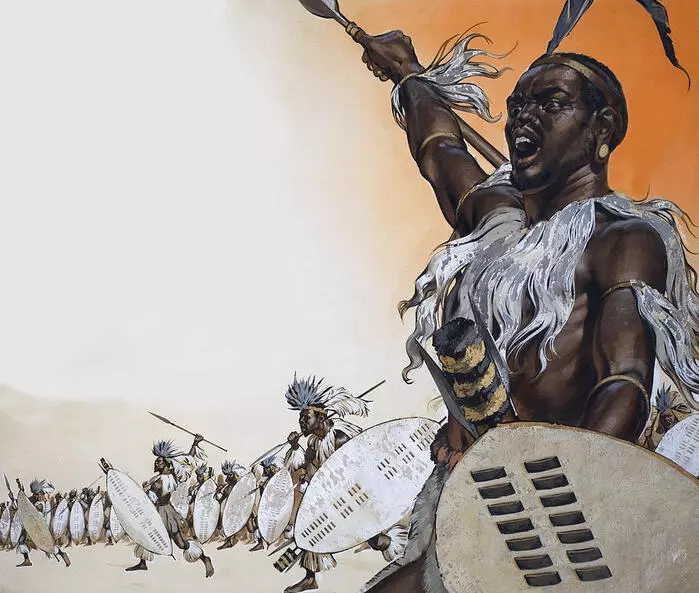
Ancient African kingdoms heavily relied on their military prowess for defence and expansions of their tribes considering whole continent since beginning was a mosaic of warring communities.
African kingdoms with superior military strength instilled fear in lesser kingdoms, enabling these larger kingdoms to maintain their supremacy for generations.
Among these, the Somali people stand out as the most powerful African group in history.
They inhabit the largest territory in Africa, spanning across four countries: Somalia, Ethiopia, Kenya, and Djibouti.
Known for their fierce ranching skills and adept trading, they boast Africa’s richest maritime culture and history.
The Nubian People, creators of the Kush Kingdom, hold the distinction of establishing Africa’s longest-running monarchy.
The Kush Kingdom, stretching from the Middle East to Europe, successfully repelled all foreign invaders and even dominated the Egyptian Empire.
Lastly, the often underrated Mali people are celebrated for building the most powerful Empire in West Africa.
Their tremendous military capacity enabled them to colonize vast territories, marking their place in history.
Ancient (& Current) Egypt, Kingdom of Zimbabwe, Oyo Empire, etc are some other popular examples.
9. Israeli

Modern Israelis, facing tremendous everyday obstacles, cherish each day as a blessing, living life with resilience one day at a time.
Despite being one of the most hated nations, Independence is a hard-won right for Israelis, achieved against formidable odds, and they’ve seldom had the luxury of prolonged peace without the looming threat of conflict.
Understanding the reasons for their struggle, the majority of Israelis are united by a common cause.
For many, it’s a religious and spiritual connection to the land of Israel, integral to the Jewish people’s existence and soul.
Others are propelled by a fervent resolve to prevent a second Holocaust, ensuring Israel remains a sanctuary for Jews worldwide.
The recent resistance of Israel against Iran, Hamas, and Iranian proxies (Like Hezbollah, Houthis, Quds, etc) demonstrates a significant aspect of Israeli bravery.
Amidst escalating tensions, Israel has faced direct attacks from Iranian forces and their allies, including a complex assault involving drones and missiles.
This marked a major escalation in the covert war between Israel and Iran, showcasing Israel’s resilience and readiness to defend its sovereignty.
Israel’s unwavering commitment to protect its diverse populace—comprising Jews, Israeli Muslims, Christians, and others—amidst various threats, exemplifies the community’s collective courage and unity.
8. Japanese
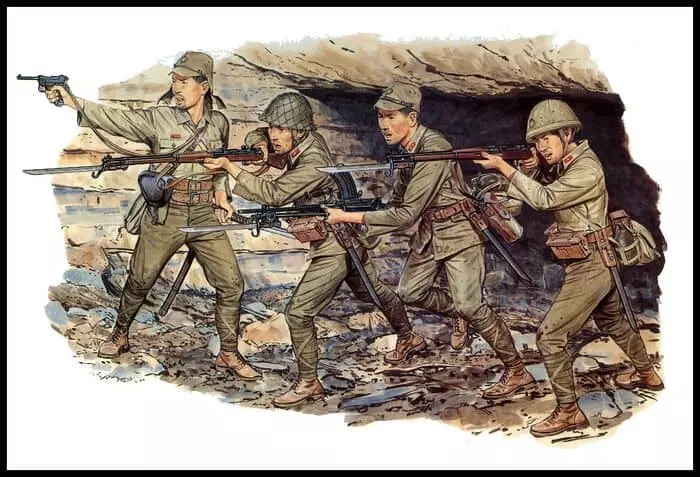
Military culture has deeply influenced Japanese society, shaping its values, norms, and national identity.
The legacy of the samurai, with their strict code of bushido emphasizing honor, discipline, and loyalty, has left an enduring mark on Japan.
This martial ethos was central to Japan’s modernization in the Meiji era and continued to influence military and civilian life well into the 20th century.
One of the most significant instances of Japanese bravery is the Russo-Japanese War of 1904-1905.
Japan’s victory against a major European superpower was a testament to its military capabilities and strategic acumen.
It was also a pivotal moment that showcased Japan’s emergence as a formidable force on the world stage.
Another profound example of bravery is the collective resilience shown during the Mongol invasions in the 13th century.
Despite facing a vast and formidable enemy, the samurai defended their homeland with extraordinary courage and tactical ingenuity, particularly during the battles at Hakata Bay.
These instances reflect the deep-seated valor that is an integral part of Japan’s history and cultural psyche, demonstrating how military culture has not only impacted its past but continues to shape its present.
7. Marathas
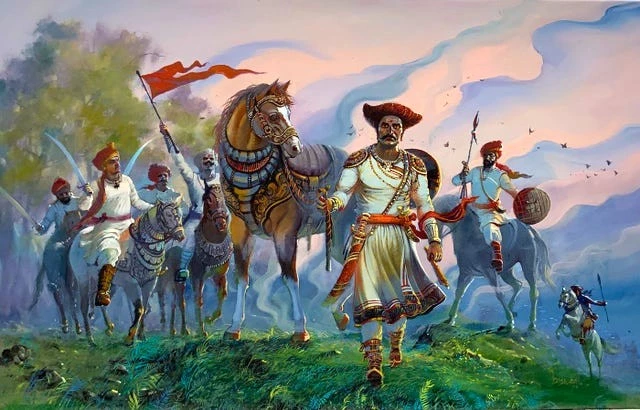
The Marathas ruled from the Arabian Sea to the Bay of Bengal.
Founded by a young man named Shivaji.
This young man went on to become Chhatrapati Shivaji Maharaj, who in history is remembered as one of India’s most powerful kings and a thorn in the side of the Mighty Mughal Empire.
Military culture profoundly influenced the Marathas and played a pivotal role in shaping pre-British Raj India. The Marathas, under the leadership of figures like Baji Rao I and his sons, expanded their empire to its zenith, stretching from Thanjavur in the south to Attock in the north.
They were known for their agility and guerrilla warfare tactics, which allowed them to become the de facto rulers of Delhi and challenge the might of the Mughals.
The biggest instance of Maratha bravery is often cited as the Third Battle of Panipat in 1761. It was a decisive battle that saw the Marathas, led by Sadashivrao Bhau, engage in a fierce confrontation with the Afghan invader Ahmad Shah Abdali.
Despite the eventual defeat, the bravery displayed by the Marathas in this battle is remembered as a testament to their courage and strategic prowess. This battle, although resulting in loss, marked the Marathas as a formidable military power in the Indian subcontinent.
The Maratha military history, with its roots in the valorous exploits of the 17th and 18th centuries, continues to resonate in modern India.
Today, The Maratha Light Infantry is one of the oldest and most revered regiments in the Indian Army, tracing its origins back to the Bombay Sepoys raised in 1768. It is recognized as the most senior light infantry regiment in the Indian Army.
6. Vikings

The common portrayal of Vikings as mere raiders and pillagers oversimplifies their rich and multifaceted history. In reality, they were also explorers, traders, and settlers with a complex society and culture.
Its true that Military culture was central to Viking society, influencing their expansion across the North Atlantic and into the Mediterranean during the Viking Age (c. 790-1100 CE).
The Vikings’ prowess in warfare was characterized by their use of ships for strategic mobility, a strong grasp on logistics, and hit-and-run tactics.
Their society was not made up of unified kingdoms but rather consisted of individual warbands led by local chieftains, earls, and kings, who conducted raids and established overwintering bases for campaigns.
The Viking warriors, known for their martial prowess and bravery in battle, were highly respected within their society.
Success in warfare was a significant determinant of social rank and fame, and warriors sought honor and glory through acts of valor.
Every able-bodied man was expected to fight when needed, and those who didn’t were considered dishonorable, creating a culture where combat was essential for survival and honor.
One of the most notable instances of Viking bravery and military might is the Battle of Stamford Bridge in 1066. This battle marked the end of the Viking Age and is often cited as a testament to their fighting spirit.
Despite being heavily outnumbered, the Vikings fought fiercely against the English forces until they were eventually defeated.
The battle showcased the Vikings’ formidable combat skills and their willingness to fight to the death, which has become a legendary example of world bravest community in Medival times.
5. Mongols
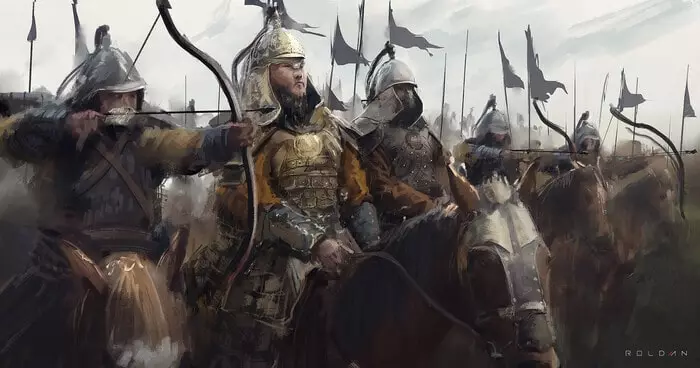
Mongol warriors, a force of 100,000, overcame heavily armored armies with their bows and arrows, defying the odds.
Outnumbered yet undeterred, the Mongols consistently triumphed, their victories rooted in a blend of rigorous training, strategic tactics, iron discipline, sharp intellect, and the relentless evolution of warfare methods.
From a tender age, Mongol children were taught to ride and hunt, mastering the bow, which became an extension of their being.
Both Mongol steeds and soldiers were renowned for their robustness, agility, and endurance, contributing to a military legacy that reshaped the world.
The Mongol bravery played a crucial role in establishing one of the largest empires in history.
Additionally, their ability to adapt to different situations, learn from their experiences, and maintain loyalty among their followers were key factors in their military success and the growth of their empire.
4. Cossacks
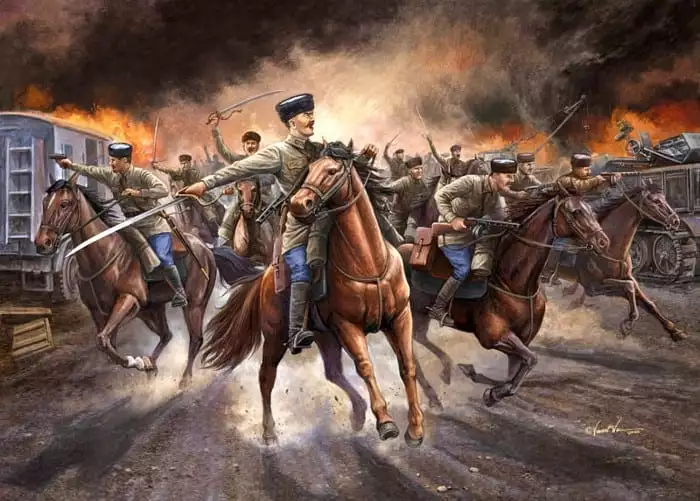
Cossacks, a distinct group of Russian military combatants, maintain their presence today, though their military might has evolved.
Originating from the Turkic word kazak, meaning “free man” or “adventurer,” Cossacks are renowned for their exceptional military skills, especially in horsemanship. The term was first recorded in 1395, signifying the start of their storied legacy.
Among the most notable are the Ukrainian Zaporizhia Cossacks and the Russian Don, Kuban, and Ural Cossacks.
These groups fiercely defended their autonomy through a series of rebellions in the 17th and 18th centuries, including the Pugachev Rebellion of 1773-1775, which later inspired Alexander Pushkin’s “The Captain’s Daughter.”
Their significant contributions also extended to aiding the Russian Czars in territorial expansion, marking the Cossacks as key figures in Russian military history and among the bravest communities in the world.
In the current geopolitical landscape, particularly in regions like Ukraine, the Cossacks have been noted for their involvement in frontlines, such as the ongoing war following Russia’s invasion of Ukraine.
In modern Russia, Cossacks have been integrated into state service, where they can officially wear uniforms, hold ranks, and perform services for the state.
3. Kurds
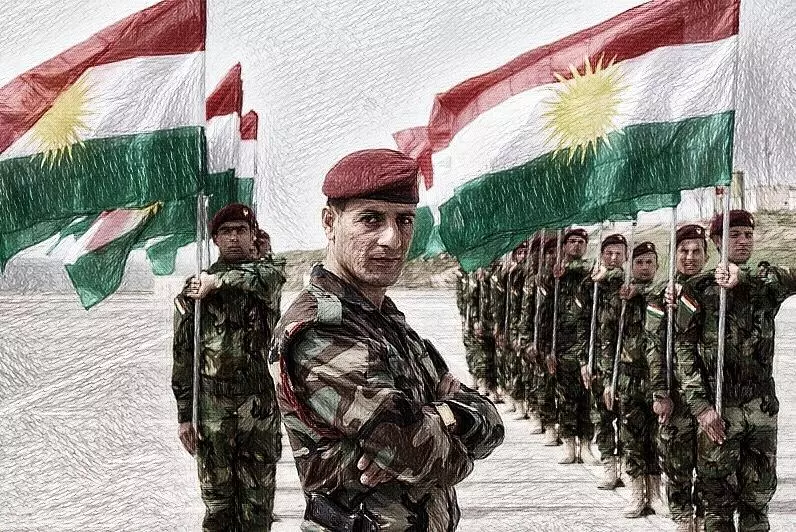
Kurd is a language and ethnic group that lives in the Taurus Mountains of southeastern Anatolia, the Zagros Mountains of western Iran, parts of northeastern Syria, northern Iraq, and western Armenia, as well as other nearby places.
Numerous genocides and rebellions have occurred in recent Kurdish history, as well as current armed confrontations in Turkish, Iranian, Syrian, and Iraqi Kurdistan.
Kurdish autonomous territories exist in Iraq and Syria, and Kurdish movements continue to push for more cultural rights, autonomy, and independence throughout Kurdistan.
The current situation of the Kurds is complex and challenging, as they face both state and non state enemies on multiple fronts. In recent developments:
- Turkey has conducted airstrikes targeting Kurdish positions in Iraq and Syria, in retaliation for attacks on Turkish soldiers by the Kurdistan Workers’ Party (PKK). Turkey’s actions reflect ongoing tensions and conflict with Kurdish groups, which Ankara views as a threat to its national security.
- Iraq has seen its share of violence involving Kurdish groups, with clashes between non state forces and the PKK in northern Iraq resulting in casualties.
- In Syria, Kurdish groups have been involved in the civil war and have faced off against various factions, including Turkish-backed forces. The Kurds in Syria have also been managing their self-governance in northeastern regions amid the war.
These events underscore the precarious position of the Kurds, who seek greater cultural rights, autonomy, and independence, while simultaneously defending their territories against external military actions.
The Kurds’ resilience in the face of such adversity is a testament to their enduring spirit and desire for self-determination.
2. Gurkhas
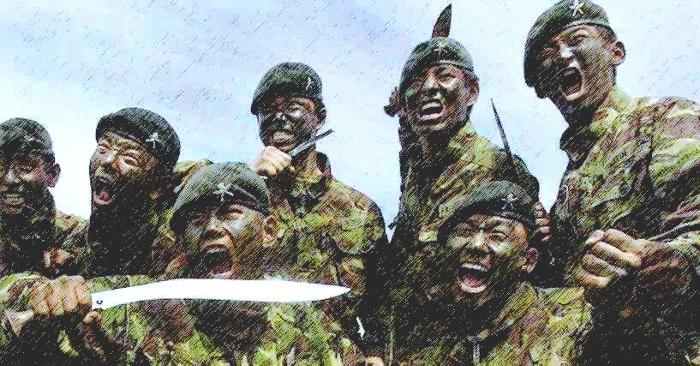
Gurkhas are considered exceptionally brave due to their storied history of valor and military prowess.
Originating from Nepal, Gurkhas have been part of the British Army for over two centuries, renowned for their fearlessness in combat and their motto, “It is better to die than be a coward”.
The Gurkhas’ war cry, “Jai Mahakali, Ayo Gorkhali,” which translates to “Glory be to the Goddess Kali, here come the Gorkhas!” is a powerful expression of their fighting spirit.
This battle cry, often accompanied by the brandishing of their iconic khukuri knives, has historically struck fear into the hearts of their adversaries and serves as a rallying call that embodies their readiness to face any challenge with bravery and might.
Their bravery was notably recognized during World War I, where they suffered significant casualties and won numerous awards for gallantry.
One of the most significant instances of Gurkha bravery is the Battle of Gallipoli in 1915, where Gurkhas charged fearlessly against entrenched enemy positions.
Their actions during this battle, and many others, earned them a reputation as some of the world’s most formidable soldiers.
In modern times, Gurkhas continue to serve in various armies around the world.
They are a vital part of the British Army, with new recruits undergoing intense training at the Infantry Training Centre in Catterick, North Yorkshire.
Gurkhas also serve a crucial part in the Indian Army (Gorkha Regiment), where they are known for their fierce fighting abilities, particularly in challenging terrain like the Himalayas.
Additionally, Gurkha units are part of the Singapore Police Force and the Brunei Gurkha Reserve Unit, contributing to international peacekeeping efforts.
Sam Manekshaw, a legendary Indian Chief of Army Staff said “If a man says he is not afraid of dying, he is either lying or he is a Gurkha.”
1. Sikhs
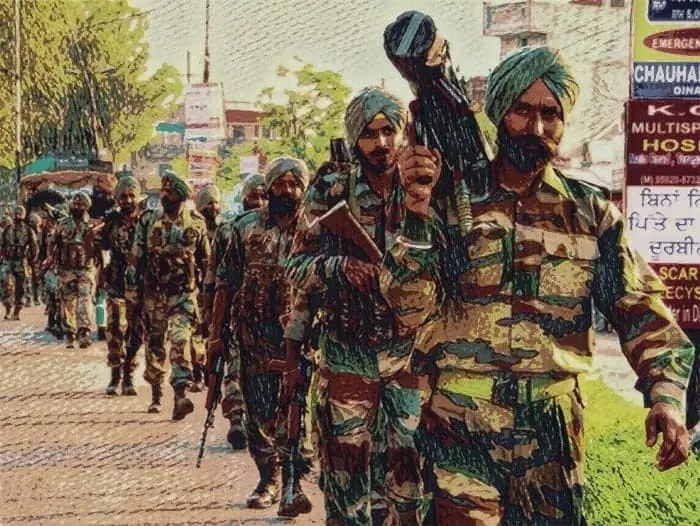
The Sikh community, renowned for their bravery, is celebrated for their self-respect and humanitarian efforts that positively impact the world.
Sikhs have consistently embodied the highest levels of honor and valor. Across the globe, ‘Rab de bandey’—a term of endearment for Sikhs meaning ‘God’s children’—are known to go above and beyond, exemplifying the best of humanity with kindness, courage, and empathy.
Numerous anecdotes highlight their compassionate nature, like when Sikh volunteers organized a 24-hour langar during the challenging Jat agitations, providing sustenance to those in need.
In the aftermath of the November terror attacks, the Sikh community in Paris united to support the distressed Parisians, reflecting their spirit of solidarity. Moreover, Sikhs have extended their generosity to conflict zones, setting up a ‘Langar’ at the Iraq-Syria border to feed refugees, showcasing their golden-hearted bravery.
Today, Sikhs play a significant role in the current Indian Army, with a history of military service dating back to the British colonial era. Sikhs are overrepresented in the Indian armed forces.
The Sikh Regiment and the Sikh Light Infantry are two regiments that consist only of Sikh soldiers, and they are among the most highly decorated units in the Indian Army.
These actions firmly establish the Sikh community among the bravest community in the world, continually demonstrating their commitment to humanitarian service and integrity.
These bravest communities in the world have demonstrated that even in the darkest of times, hope and courage can prevail.
Through their resilience and determination, they have inspired countless others to stand up and face their challenges with strength and fortitude.

Very true.
Where do stand ‘’ Chechanz’’ ???
Great sharing
“𝓣𝓱𝓮 𝓡𝓲𝓼𝓼𝓪𝓵𝓪”
“If you want to live an authentic, meaningful life, you need to master the art of disappointing and upsetting others, hurting feelings, and living with the reality that some people just won’t like you. It may not be easy, but it’s essential if you want your life to reflect your deepest desires, values, and needs.”
“𝓣𝓱𝓮 𝓡𝓲𝓼𝓼𝓪𝓵𝓪”
We soldiers-who r rewarded. For killing, also find it difficult to kill in cold blood, especially in close combat. Looking other person in the eye, with a full awareness of his humanity, and then pulling the trigger and blowing them away is an intense traumatic experience leave aside cutting the throat open and feel the gush of warm blood. I have trained young local & foreign soldiers for close combat in over 10 countries. The immense destructive power lies in the fact that convincing excludes victims from the universe of moral obligation. So killing them is of no greater consequence than swatting a mosquito or poisoning a rat. that is what i need to convince them . Young soldiers sometimes vomit, weep become incontinent, or tremble uncontrollably after their first kill. It’s clear that human beings have a horror of killing as well as a fatal attraction to it. Our inhibitions keep the violent side in check, but when the balance between them is upset, the results can be devastating. I get random calls even after 20 yrs now seeking solace and support.
KILLING IS EASY – ITS THE LIVING WITH IT FOR THE REST OF YOUR LIFE THATS THE DIFFICULT PART.!!!
“𝓣𝓱𝓮 𝓡𝓲𝓼𝓼𝓪𝓵𝓪”
A great analysis. We salute our braves.
Very nice information
Sikhs never attack women and children, unarmed enemy and fallen adversary. They provide succour to the wounded both own and that of the enemy. They are unmatched in the field of courage and humanity. That is why they are called saint soldiers. P
Proud to be a Sikh. I knew we , our ancestors a brave nation but never knew we are Bravest. Sir please nte we are very kind too. You will find us wherever the humanity is suffering.
Colonel Sajjan Singh
that was then. now? I look at Sikhs in Canada and they are a bunch of phudus.
All communities are brave. The situation dictates. The Tamils ruled from Arabian sea to South China sea, Srilanka to Kalinga. The LTTE fought two mighty armies.
Perfect Sikhs are not only a community but Sikh is a Culture that’s called as KHALSA (PURE)
Yes i am proud to be Sikh
Great. Agree
A fair analysis , all the communities mentioned are indeed the bravest of the brave.
Sikh community is at number ONE and will remain at number ONE. This is all with the blessings of all the ten gurus.
I am feeling proud that Sikhs rank no.1 in the world as the bravest people.
Sikhs aren’t a community, they are from a religion called Sikhism. Do NOT label them as a community because as a Sikh myself, I find it a bit offensive to be labelled from a community rather than a Religion itself. Please fix your article if you see my comment.
You must see the definition of ‘community’. A group of people called community, sikhs are a community like hindu, muslim and christians. But when we talk about religion it’s a bit deeper than you think. Sikhism, hinduism, islam and christianity, they are called as religions. A community makes the religion.
Hope you understand the difference between religion and coummnity.
that was then. now? I look at Sikhs in Canada and they are a bunch of phudus.
Were are Rajputs??
Proud to be a sikh.
Our guru’s teach us before becoming a Sikh, Hindu, Muslim, Christian become a human first
Respect all the communities 🙏
Proud to be sikh❣️ PANJAAB🫡